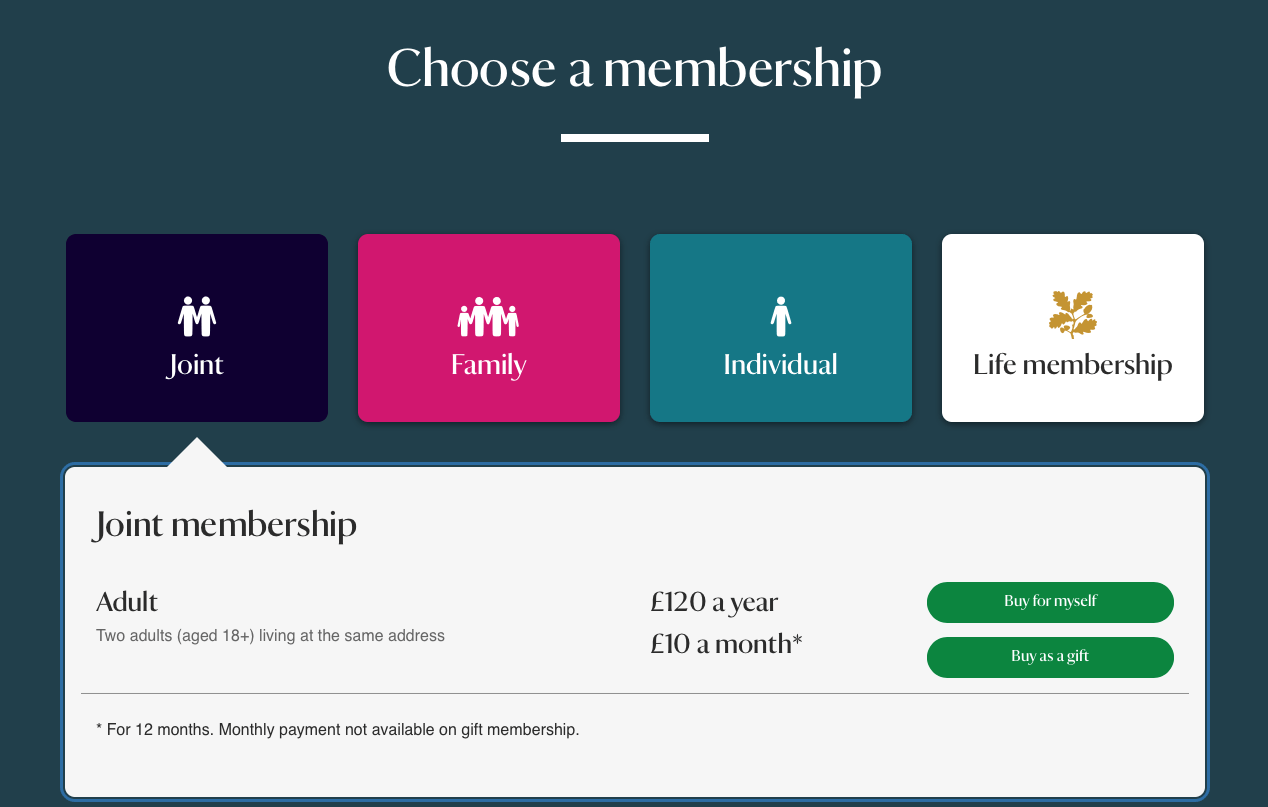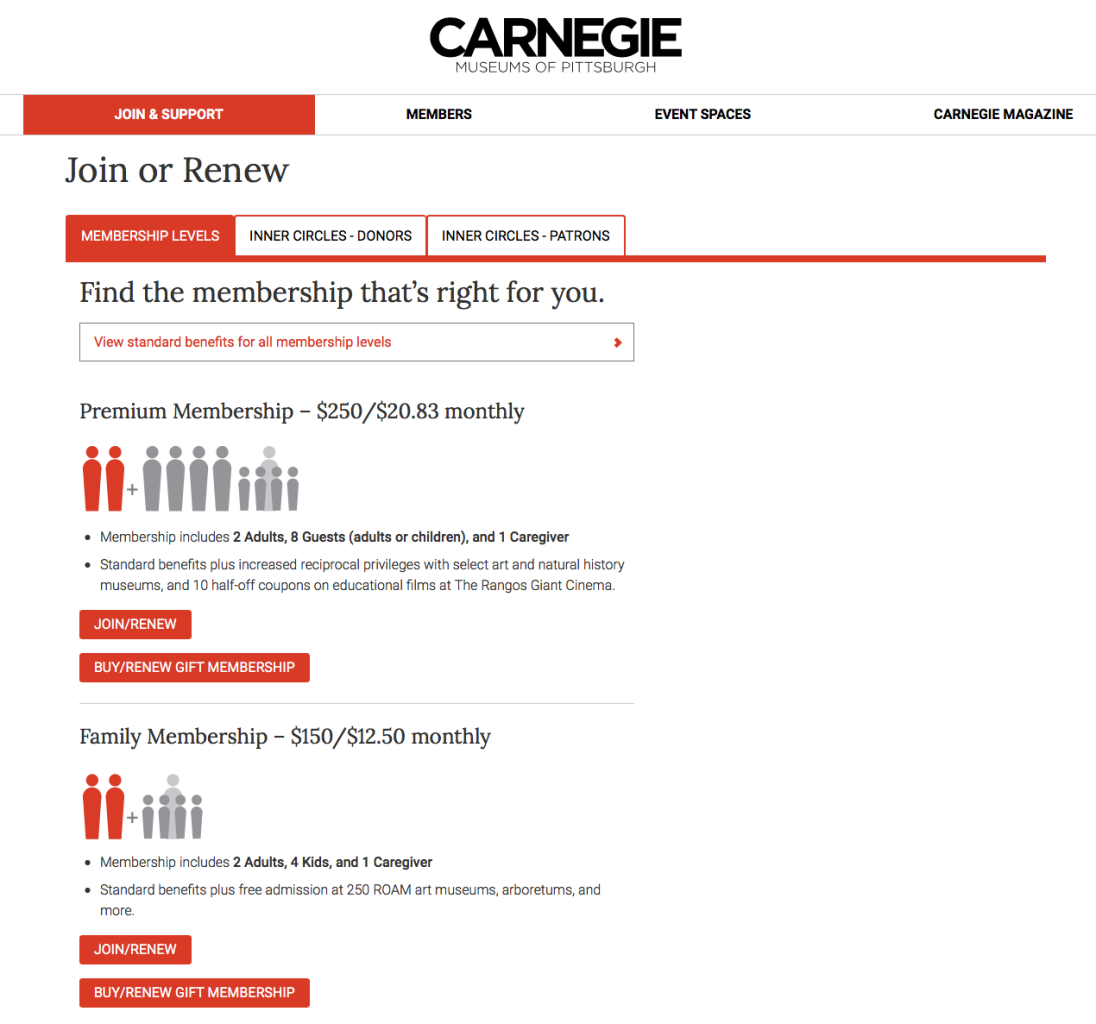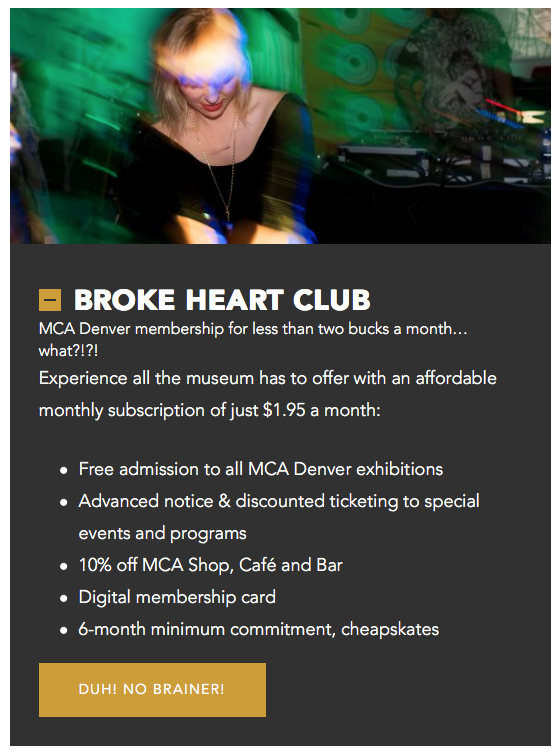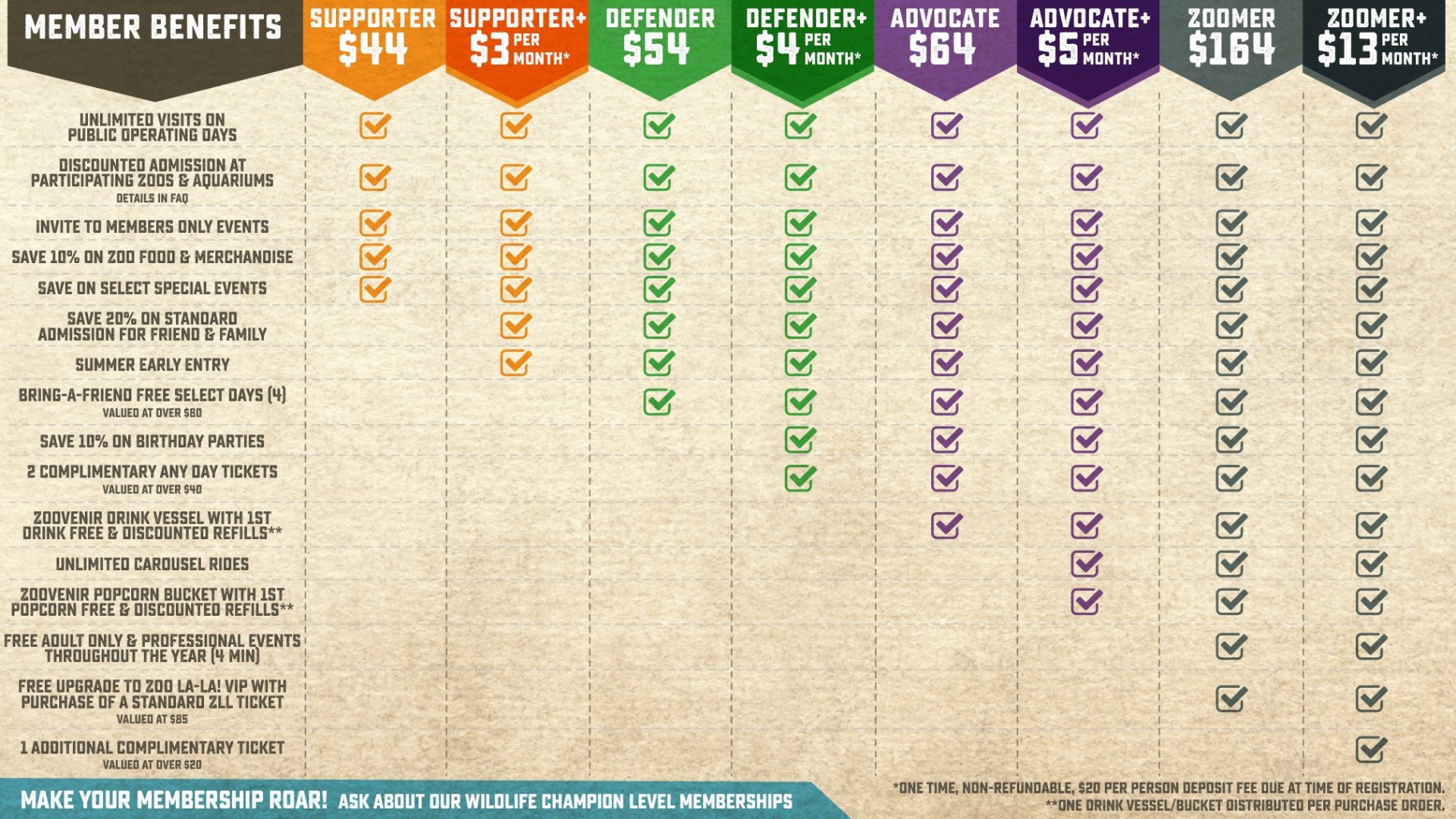
As cultural organizations continue to face declining membership and significant lost revenue during the pandemic, many are seeking ways to engage new audiences and retain existing members. Luckily, while the long-term impact of the crisis is still unknown, the path to a more accessible and financially sustainable membership program is clear: monthly membership.
In contrast to the traditional museum membership program, which requires dues to be paid in full annually, monthly membership enables members to contribute a specified amount automatically each month. Sometimes marketed as “sustainer” or “evergreen” memberships, monthly membership has been growing in popularity across the broader nonprofit sector for years. Organizations such as the World Wildlife Fund, National Public Radio, Human Rights Campaign, and other nonprofits have been highly successful in acquiring new members through such programs. Across the nonprofit sector, recurring-giving programs are showing some very promising results:
- In 2019, revenue from monthly giving increased by 22 percent, more than double the revenue from one-time gifts. [1]
- Retention rates for monthly donors are between 85 and 95 percent, nearly double the rate of any other type of donor. [2]
- Monthly donors have a higher lifetime value, with sustainers contributing an average of 170 percent more annually than one-time donors. [3]
- Monthly giving can attract a younger, more diverse audience. [4]
But while offering a monthly membership program would seem like a natural fit in today’s subscription-focused economy, where 15 percent of online shoppers subscribe to one or more e-commerce service [5], the cultural sector has lagged behind other industries in implementing such programs. Only in the UK, where museums have benefited greatly from the ease and high adoption rates of direct debit (aka automatic bank withdrawal), is monthly membership becoming a widely available option for joining.

Establishing Predictable, Consistent, and Recession-Resistant Cash Flow
Especially in this moment, monthly membership represents the single greatest opportunity for museums to generate predictable, consistent, and recession-resistant cash flow. At a time when budgets are tight for both members and institutions, low-cost monthly payments may be one of the best strategies for keeping audiences involved. Further, a monthly payment structure can establish a more mission-focused foundation by encouraging members to continue their support indefinitely—even when they may not be able to take advantage of their benefits on-site. With the right strategy, monthly membership has the potential to be positioned as a less consumer-driven alternative to the traditional museum membership program. That is, monthly membership can shift the member’s mindset toward a more philanthropic orientation by eliminating the typical cost-benefit equation that is calculated each year when the member receives their annual renewal notice. Why? The smaller payment and automatic charge results in less friction and increases the likelihood that the member will consider their monthly membership fee a donation.
Consider the San Antonio Zoo’s launch of its monthly membership program in 2020. Not only has the zoo’s new monthly membership gained strong adoption from locals, the program is also seeing interest from visitors who live outside of the San Antonio drive market. “We saw the opportunity to see more consistent revenue while drawing a stronger tie to mission, even if members can’t visit,” said Ash Harris, Vice President of Guest Experience at San Antonio Zoo. At just three dollars per month (plus a one-time non-refundable processing fee of twenty dollars per person), the San Antonio Zoo’s monthly membership is easy to say “yes” to, and even easier to justify as a donation if you’re not able to visit as frequently as you’d like.
Improving DEAI and Engaging New Audiences
While certainly not a panacea, monthly membership can be a mechanism for improving diversity, equity, accessibility, and inclusion within cultural organizations. This has been the case at Carnegie Museums of Pittsburgh, which launched one of the earliest examples of a successful monthly program in 2015, with nearly 10 percent of its membership base of thirty-three thousand now enrolled, at about 80 percent retention. The program, which brings in approximately forty thousand dollars per month in revenue, has also attracted a more diverse audience than the traditional membership program and “proven to be a way to diversify the membership base,” said Cari Maslow, the museums’ former Associate Vice President of Engagement.

MCA Denver baked the goal of accessibility into its monthly membership strategy from the beginning. Driven by the belief that everyone should have access to the museum’s offerings, including exhibitions and programs, staff decided to add a new membership level in 2017 that would prioritize accessibility and affordability by offering full access for less than two dollars a month.
Targeting adults between the ages of eighteen and thirty-five, MCA Denver christened its new membership program the Broke Heart Club. “Our strategy was intentional and tied to our museum’s vision of welcoming all audiences, celebrating all voices, and sharing all stories,” said Bradley Ingles, the museum’s Membership and Community Partnerships Manager. “By offering a more affordable option, so many more museum lovers have the opportunity to access the benefits of membership. We’ve noticed that younger museum patrons in particular take advantage of the Broke Heart membership level, which we hope will lead to lifelong museum visitation.” Echoing this thought, Blair Salt, Membership and Visitor Services Manager at the McNay Art Museum, stressed that monthly membership is “a payment option that makes membership a little more accessible and can break down the perceived barrier of membership being a fancy or exclusive club that you have to pay a premium to join.”

Encouraging Upgrades and Recapturing Lost Members
Spreading the cost of membership out over time allows members to increase their impact on the causes they care about by upgrading into higher levels without exceeding what they can afford. For example, while a three-hundred-dollar membership may feel out of reach when paid all at once, a payment of twenty-five dollars per month can be much more palatable. At the Arkansas Museum of Fine Arts, Spencer Jansen, Director of Membership and Visitor Experience, is leveraging monthly membership in this way. “It is a frictionless way to encourage upgrading,” said Jansen. “Monthly membership makes higher levels of membership more budget-friendly.”
Monthly membership can also be deployed as a tactic for recapturing lapsed members. Carnegie Museums, for example, offers monthly membership as an alternative to lapsed members who decline to renew their annual membership. It can similarly be used in place of a discount or other special offer to keep at-risk members enrolled.
Pricing Strategy or Brand-New Product?
Monthly membership can take many forms. Some programs, like Carnegie Museums’, treat it as a simple payment option that breaks an annual membership into affordable monthly installments. Others, like the San Antonio Zoo’s, make it an entirely new product complete with its own unique set of benefits and pricing.

Either way, you should know there is an opportunity for monthly membership to be more than a pricing strategy for a traditional membership program. Zoo New England is one organization considering how to design a program from the ground up to meet the needs of new audiences. With an eye toward long-term sustainability, the zoo is thinking about ways that new and different benefits could be delivered monthly to people who aren’t interested in a traditional membership. One idea the zoo is evaluating, for instance, is a subscription-style program that would include a monthly activity kit or virtual experience.
The idea of a standalone monthly membership program is appealing for many reasons. First, it allows an organization to intentionally design the full scope of the marketing mix (i.e., product, price, promotion, and place) to meet the needs of tomorrow’s audiences. Second, it creates an opportunity to reframe the membership value proposition to be more mission-focused. Lastly, the introduction of an entirely new membership product presents an opportunity to cross-sell monthly membership to existing members in addition to (rather than in place of) the traditional, annual membership program. Consider the recent launch of Birmingham Museums On Demand, a new subscription service that features exclusive monthly content available only to digital subscribers.
As Zoo New England continues to explore possible ideas for a new monthly membership program, it will be investing in market research and testing to ensure that the new program is feasible, appealing to new audiences, and appropriately priced and positioned to fit within its broader revenue management strategy.
EFT: The Future of Monthly Giving
“EFT,” or Electronic Funds Transfer (also known as “ACH” or Automated Clearing House), is likely to be the future of monthly giving. In this payment method, the member provides their bank account information and authorizes the organization to “draw” a certain amount from the account on a designated monthly basis. Unlike credit cards, individuals rarely cancel their bank accounts, so this eliminates the need to manage card numbers or expiration dates.
Both Nacha (the National Automated Clearing House Association) and the Electronic Fund Transfer Act require that organizations implement specific procedures to ensure the member has given proper authorization for an electronic funds transfer. In general, authorizations must (1) be in writing and include a signature or be similarly authenticated; (2) have clear and readily understandable terms; and (3) permit the member to revoke authorization at any time by notifying the museum. Authorizations may also be made via telephone; however, such authorization requires notice prior to debit and a recording of the verbal authorization.
Even with such straightforward steps to set up, EFT can be a bit more difficult from a conversion standpoint, as many prospective members may not have the required bank account information readily available. Nonetheless, EFT is a more secure, hassle-free, and profitable option for organizations in the long run.
As customers have become more comfortable with online banking, monthly membership via EFT is a natural next step. If you are developing a monthly membership strategy or getting ready to launch a new program, starting out with new monthly members signing up via EFT is the best path to simplified management and higher retention rates.
The Devil is in the Details
Museum leaders who argue against monthly membership typically express two main concerns: benefits usage control and payment processing capabilities—neither of which are insurmountable nor a valid reason to dismiss a growth-oriented opportunity. That said, there are several key decision points and logistical requirements necessary for implementing a monthly membership program, including:
- Will there be a minimum commitment required?
- Will monthly members receive printed membership cards?
- Can a monthly member cancel at any time?
- What systems and processes need to be in place to accept monthly payments?
- How will account information be managed, stored, and updated?
- Is your website PCI-compliant to ensure data security?
- What will be the process for contacting members whose credit cards have expired?
- How will EFT authorizations be managed and stored?
- How will cancellations be handled?
- Will the organization invest in a credit card validation service?
- Will all levels of membership be available for monthly membership?
- Will monthly members receive the same or different benefits than annual members?
- Will the monthly membership be an entirely new product? If so, how will it be priced?
- Can monthly membership be intentionally designed to attract new, nontraditional audiences?
- What is the goal of introducing monthly membership?
Tips for Launching and Growing a Monthly Membership Program
In preparation for launching a monthly membership program, it’s important to start slow. Take the time to draft a well-structured Terms of Service and be sure to post a detailed FAQ document to head off any questions early.
Focus on marketing monthly membership to new members first. Next, develop a strategy to market monthly membership to lapsed, renewing, and upgrading members. If you are thinking about introducing an entirely new membership product, consider investing in market research early to help you craft the value proposition, understand the appeal of potential benefits, and determine prospective members’ willingness to pay.
Review all materials with a careful eye, especially the sign-up form, confirmation message, and any auto-generated emails. Be mindful of potential settings within your CRM and ticketing system that can incorrectly tag monthly members with an annual renewal date, create duplicate records for monthly members, or feed inaccurate information into your database. Set up practices to deal with the inevitable prospect of declined credit cards.
Remember that a monthly membership program needs time to grow. Allowing members to defer their first two payments at the time of signup can generate a quick lift in conversion rates. Additionally, consider letting members pause payments instead of cancelling their membership to improve retention rates. Lastly, evaluate your institution’s goals for the program and adjust your strategy accordingly.
As for the San Antonio Zoo, Harris intends to make monthly membership the “flagship” product, marketing it as the best way for new members to visit and get involved. And, as current members enter their renewal cycle, the zoo plans to encourage them to migrate to monthly membership too.
To be successful, monthly membership needs a dedicated marketing strategy and adequate promotional investment to grow into its full potential. Ultimately, the best strategy for building a new monthly membership program is to make monthly giving the primary way to join.
Unfortunately, the unprecedented loss of income suffered by museums is likely to cause significant, long-lasting trauma to the sector. As one of the surest levers for financial sustainability, and a promising route to attracting and retaining supporters, monthly membership is too important for inaction. Moreover, as cultural organizations seek to engage new audiences and diversify their member base, it may be just the thing to help make membership future-proof.
- [1] 2020 M+R Benchmarks Study
- [2] 2017 Fundraising Effectiveness Survey Report, Association of Fundraising Professionals
- [3] 2020 M+R Benchmarks Study
- [4] https://nonprofitquarterly.org/2020-giving-usa-report-both-surreal-and-suggestive-of-larger-change-needs/
- [5] https://www.mckinsey.com/industries/technology-media-and-telecommunications/our-insights/thinking-inside-the-subscription-box-new-research-on-ecommerce-consumers








Really interesting article, but with such a long list of typical concerns, how could you leave off “the cost of visiting once with a monthly membership (at 1/12th the price of a year of membership) is far less than one day’s general admission. Will people buy a monthly membership, visit, then cancel? If so, we’re out about $50 every time they do.
A 12-month minimum check box can be a part of the monthly plan sign-up process
I think the idea is to provide a mechanism for “giving” vs attaining the best ROI: these are nonprofits don’t forget, so while your objection comes from capitalist greed mindset, my sense is that those who enjoy the museum and who wish to see it flourish and who like the idea of paying monthly would think with with a different mind.
Also, as most of these appear to be Tiered offerings, the monthly paid member could enjoy benefits not offered to the general admission visitor, which would provide an economic incentive, paired with the non-greed mindset. Younger art lovers are huge subscribers of much of their consumption – and the adoption among this demo might be high.